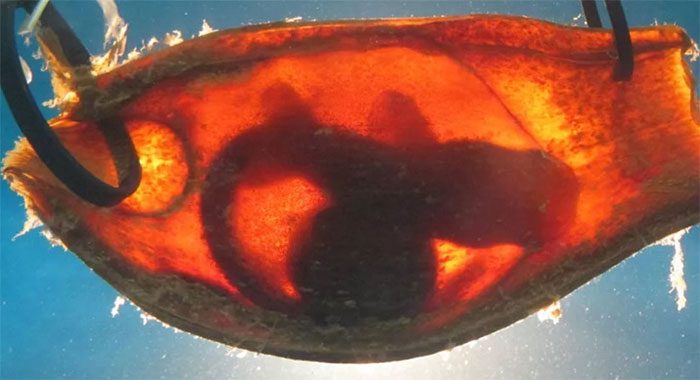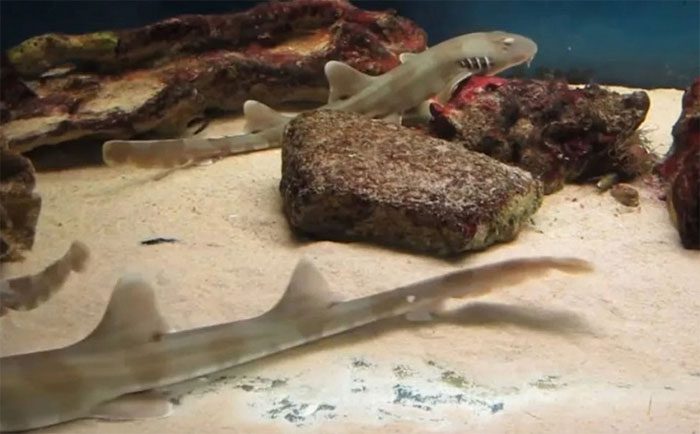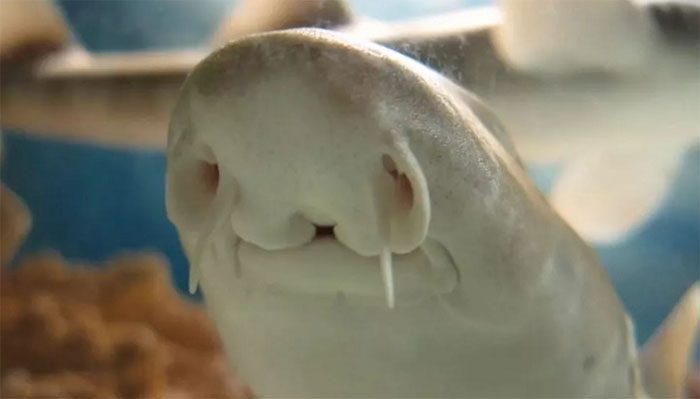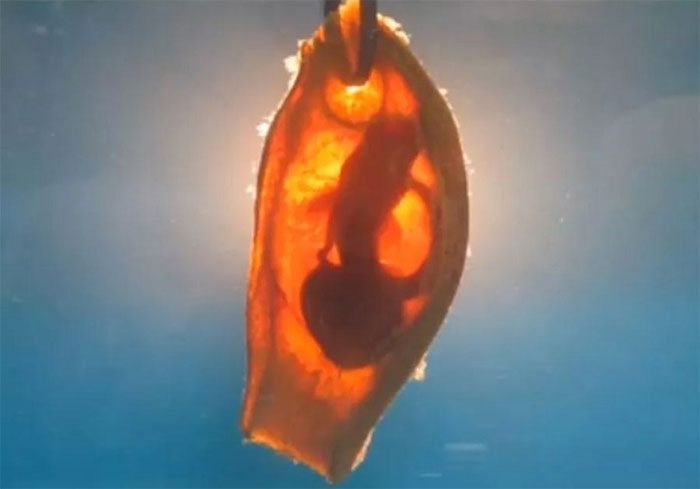On January 9, 2013, researchers reported online about the species bamboo shark (Chiloscyllium punctatum) in the journal PLoS ONE. The published images primarily showcased the embryo of this shark species.
What is particularly remarkable is that they can sense electric fields emitted by predators and have the ability to “play dead” to avoid detection, even while they are still tiny embryos encased in a protective skin pouch.

Bamboo shark embryo.
Soft Sandy Bottoms as Home
According to the Florida Museum of Natural History, the bamboo shark is typically found in coastal coral reefs or near sandy, muddy areas at depths ranging from 0 to 279 feet (0 to 85 meters).
Incredible Jaws!


Adult bamboo shark equipped with a network of sensors around its head and jaws.
Scientists indicate that, like other shark species, adult bamboo sharks are equipped with a network of sensors around their heads and jaws known as electroreceptors (ampullae of Lorenzini), which allow them to detect the faintest electric fields from both predators and prey in their surroundings.
Little “Baby Sharks”

Bamboo shark eggs.
The small rectangular eggs are interestingly compared to a mermaid’s “purse” or a devil’s “wallet.” These eggs have long tendrils at the corners that help them anchor to various surfaces.
However, despite being protected and nurtured by their egg casing, these “baby sharks” are still vulnerable to attacks from predatory fish, marine mammals, and even mollusks.





















































